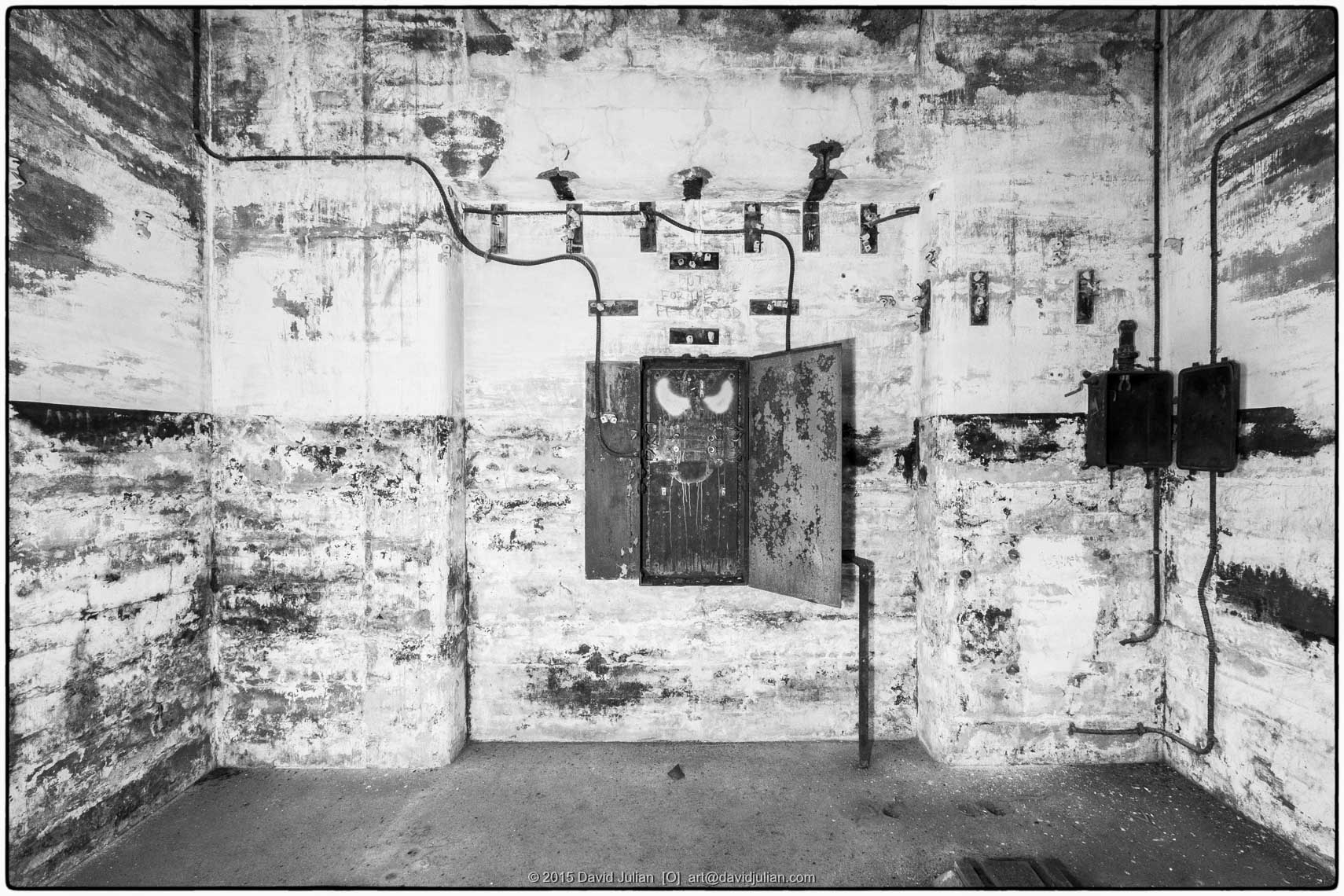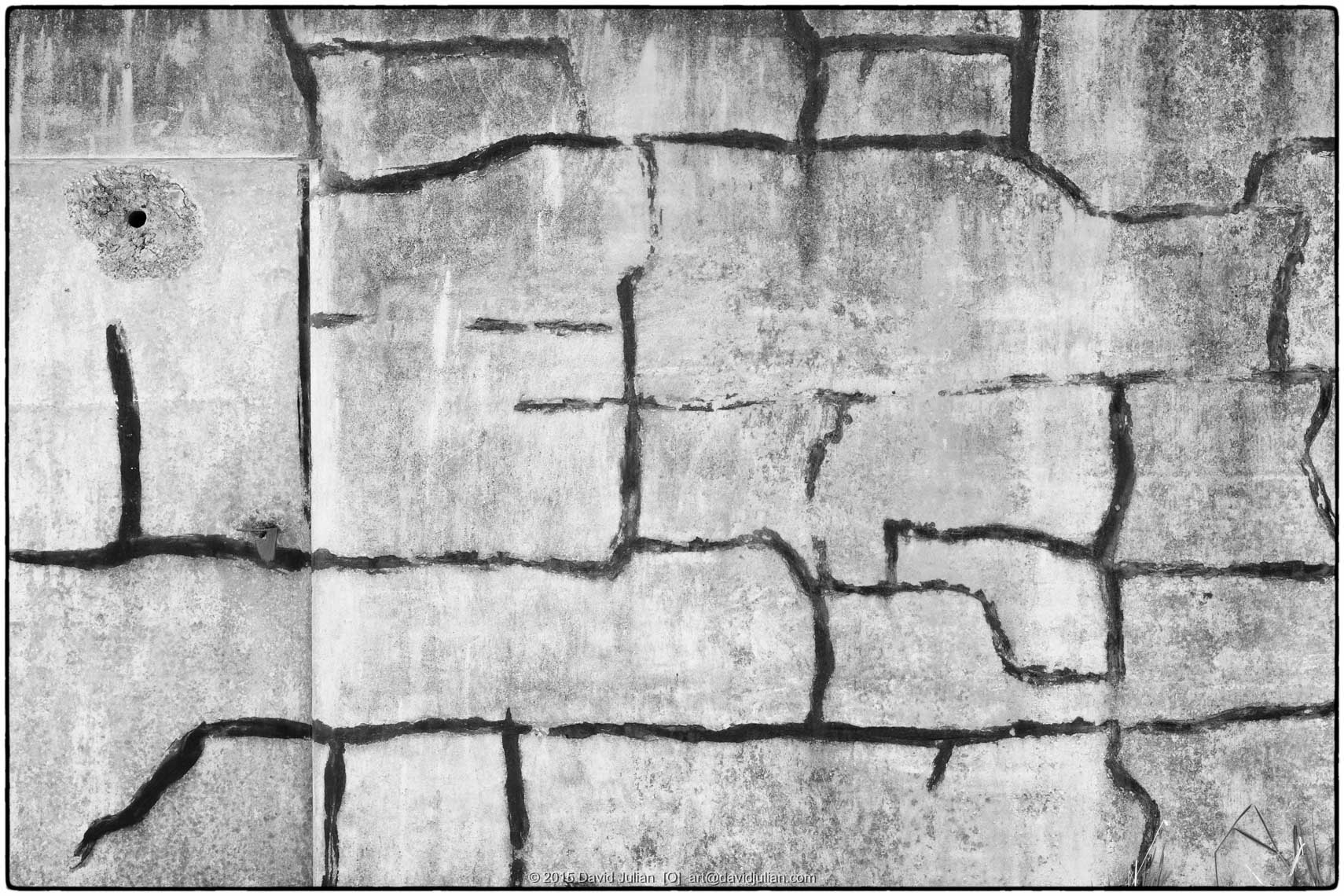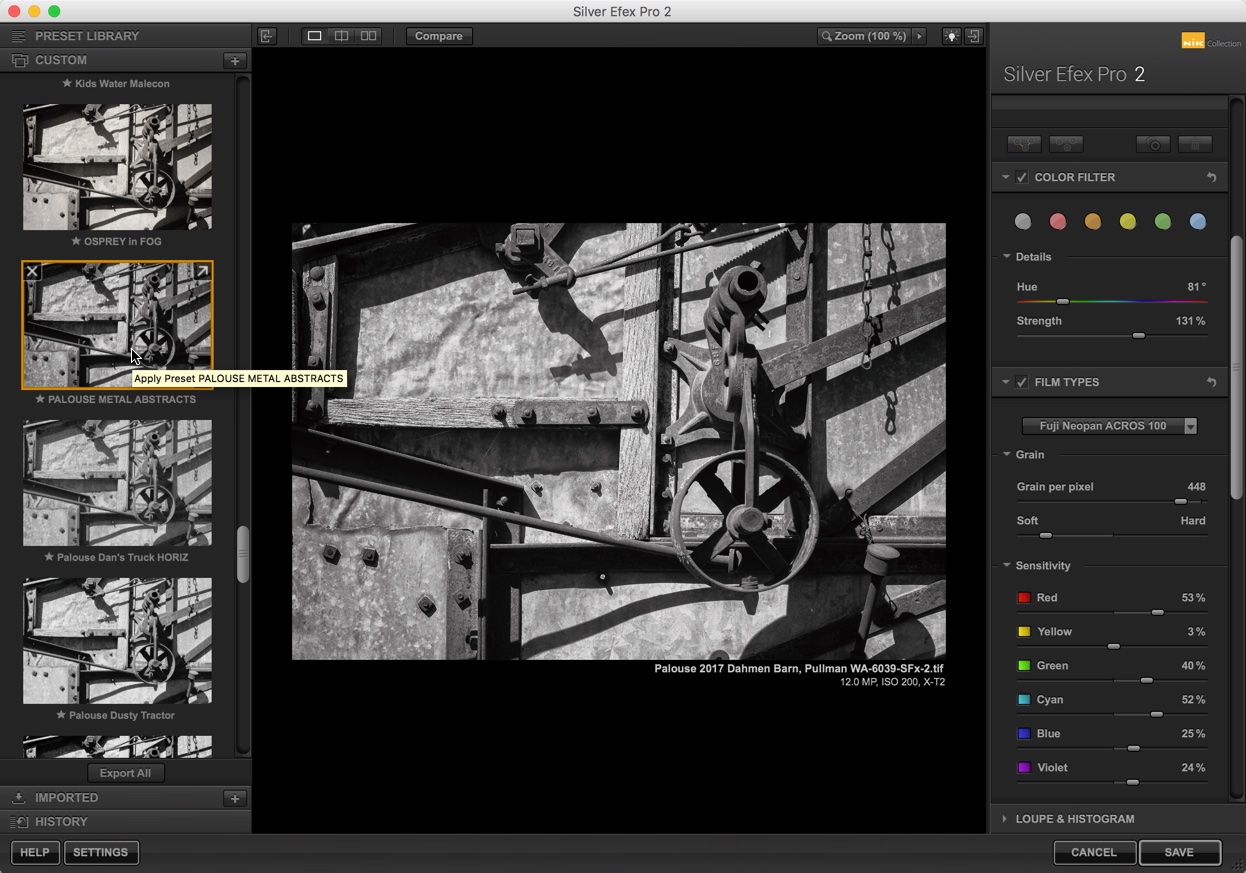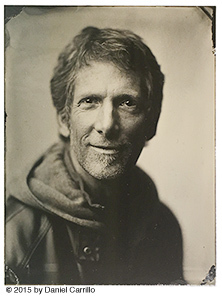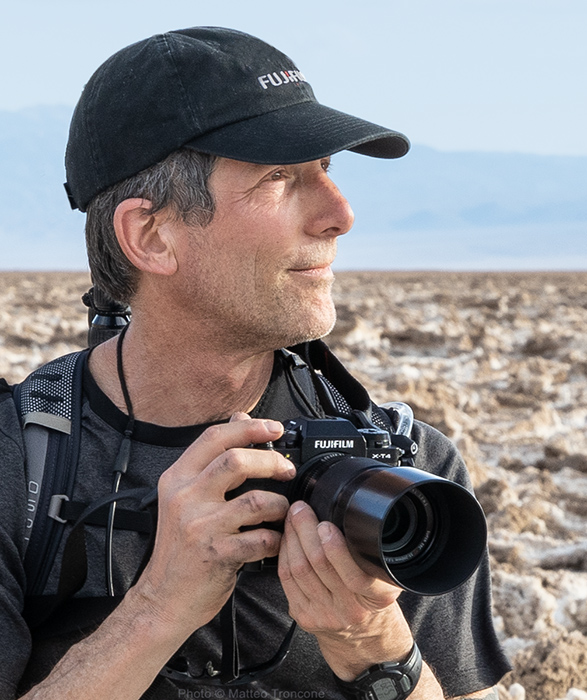I recently led a full workshop in Washington’s Palouse region, where landscapes are most people’s major focus.
But when traveling in the countryside, I love the meditation of photographing graphic abstracts in abandoned and industrial spaces. Such details provide an opportunity for me to get close, and provide a mental balance to photographing grand landscapes, local people and rural life. I believe those shapes, rivets and splinters have stories to tell me.
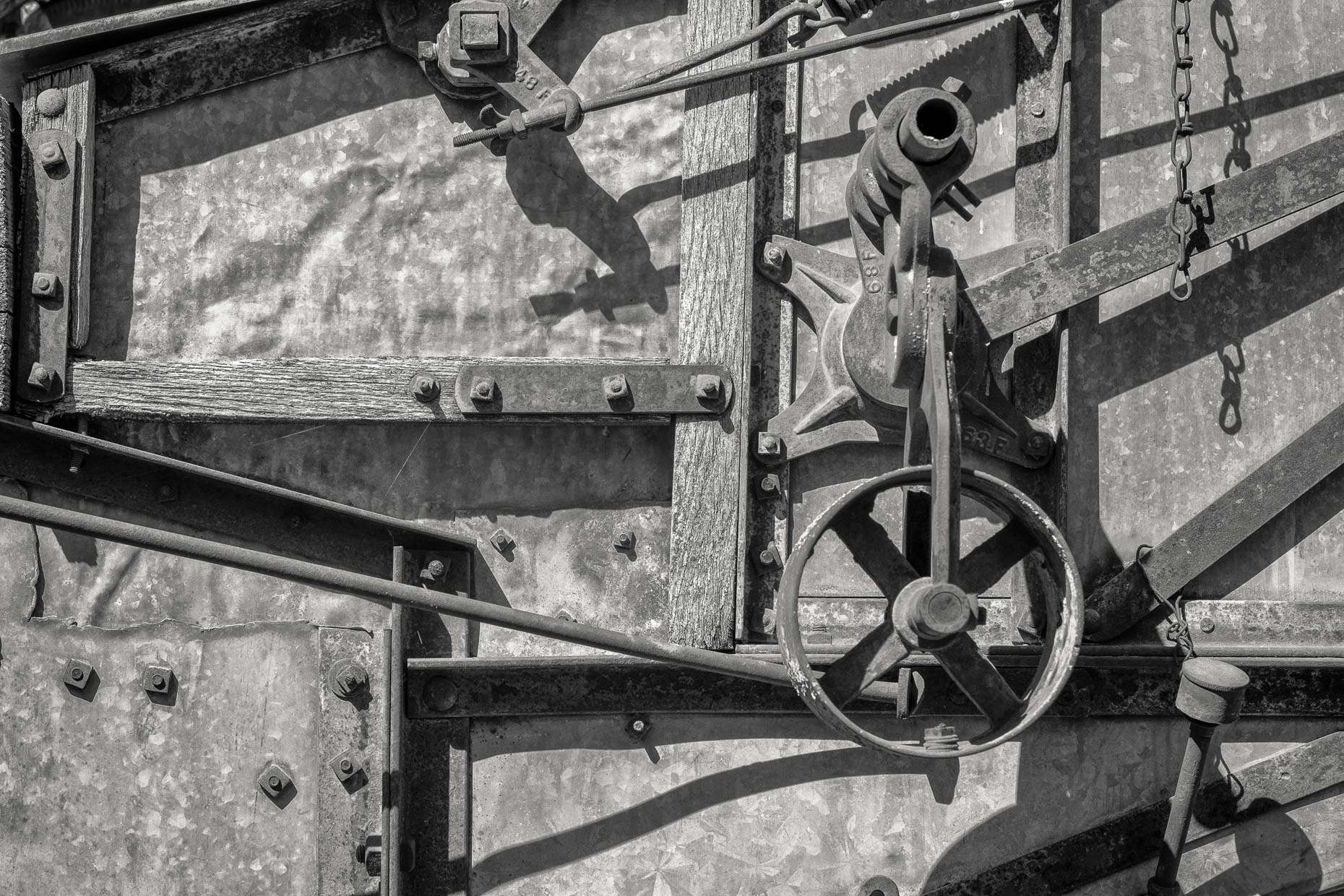 I try to seek out graphic compositions where various materials overlap with textural shadows, and where fasteners, cracks and holes punctuate the abstracts. The complexity of the textures alone interest me, but hunting for ideal compositions within the chaos of the many interlocking lines and rectangles is as rewarding to me as is capturing a decisive moment on the street.
I try to seek out graphic compositions where various materials overlap with textural shadows, and where fasteners, cracks and holes punctuate the abstracts. The complexity of the textures alone interest me, but hunting for ideal compositions within the chaos of the many interlocking lines and rectangles is as rewarding to me as is capturing a decisive moment on the street.
I also believe that these surfaces and spaces hold unique stories, and that they come alive in B&W. Over time, someone has taken care to build, arrange, repair and alter them using muscle, sweat and hand tools. Sometimes, to get into the spirit of a place, I imagine what happened there, and try to visualize a once populated space that is now a ghost of it’s former life.
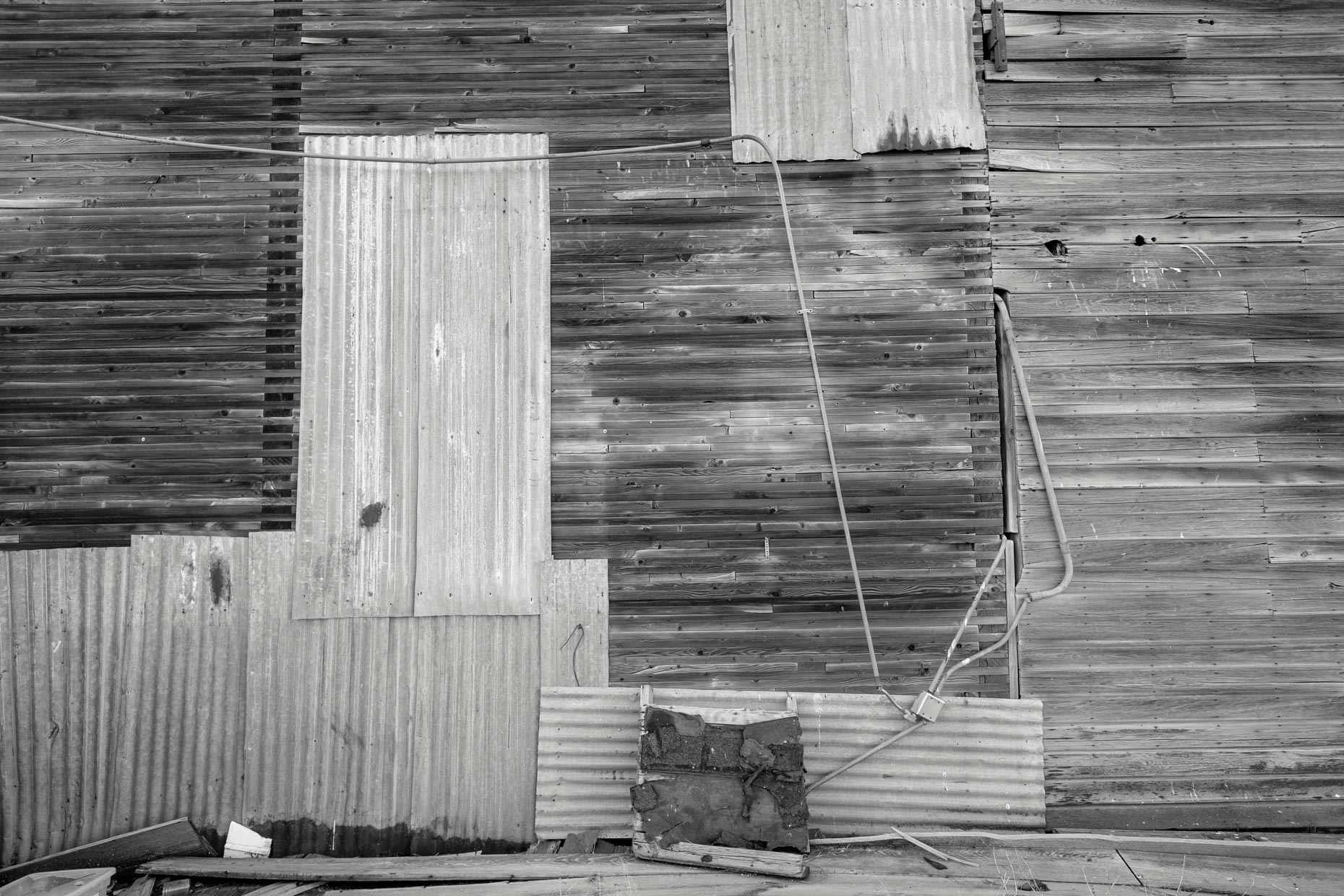
You can hear the bass tones of this collapsing granary’s beams groaning alongside the gentle cooing of nesting pigeons.
A big advantage of using the Fuji X system is the ability to actually ‘see’ in B&W while composing in the viewfinder. That is a creative game-changer.
I photograph hand-held except when light is too low for me to use my lowest ISO and at least f8. I shoot with the Fuji X-T2 mirrorless camera and prime lenses to retain as much sharpness as possible. I capture in RAW + Jpeg, setting the camera to one of the eight different monochrome modes.
This has helped train my eye to ignore color, and to anticipate which compositions will translate well into B&W. By reducing these images to B&W in camera or in post software, I eliminate the distractions and psychological interpretations of color, letting the eye wander within a frame of pure graphic form. The RAW remains a color file, but it’s preview shows up in B&W once imported. JPGs from the Fuji X cameras are rendered in color by default, or whatever Fuji film simulation you’ve dialed in.
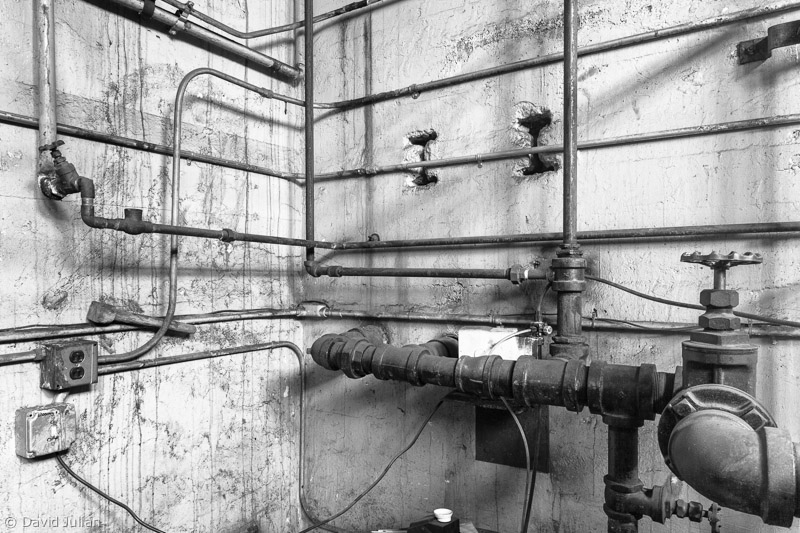
A beautifully plumbed boiler room in an elementary school.
I use wide angle lenses when photographing enclosed spaces, and tend to use normal or medium telephoto lenses for flatter compositions. I avoid letting round or bright object hit corners or edges, but all else is game. I especially enjoy the little details that are what I refer to as ‘second reads’, those things you don’t see at first glance. The small white cup seen above is an example.
When composing my industrial abstracts, I completely ignore any traditional compositional ‘rules’, such as the Rule of Thirds, and aim to find visual balance through careful framing of what is there. As I am using prime lenses, I put my eye to the viewfinder and move by body in close or step back, left or right until everything in the frame lines up and feels just right. My eye travels the edges and corners, judging movement, lines, symmetry or graphic impact. I then photograph a few framing options, always including verticals and horizontals. I am not a purist when it comes to my photographic framing; I often compose to allow about 5% extra image area for later cropping. I do however try to frame the key composition as large as possible to take advantage of my sensor’s pixel quality.
The image below is the home-made rear window of a pickup truck cab. My favorite detail is the added steel bars and broken bits of wood that once held in the window screen. I also remember the sound of this photograph: Crickets, birds and the far away drone of a crop duster.
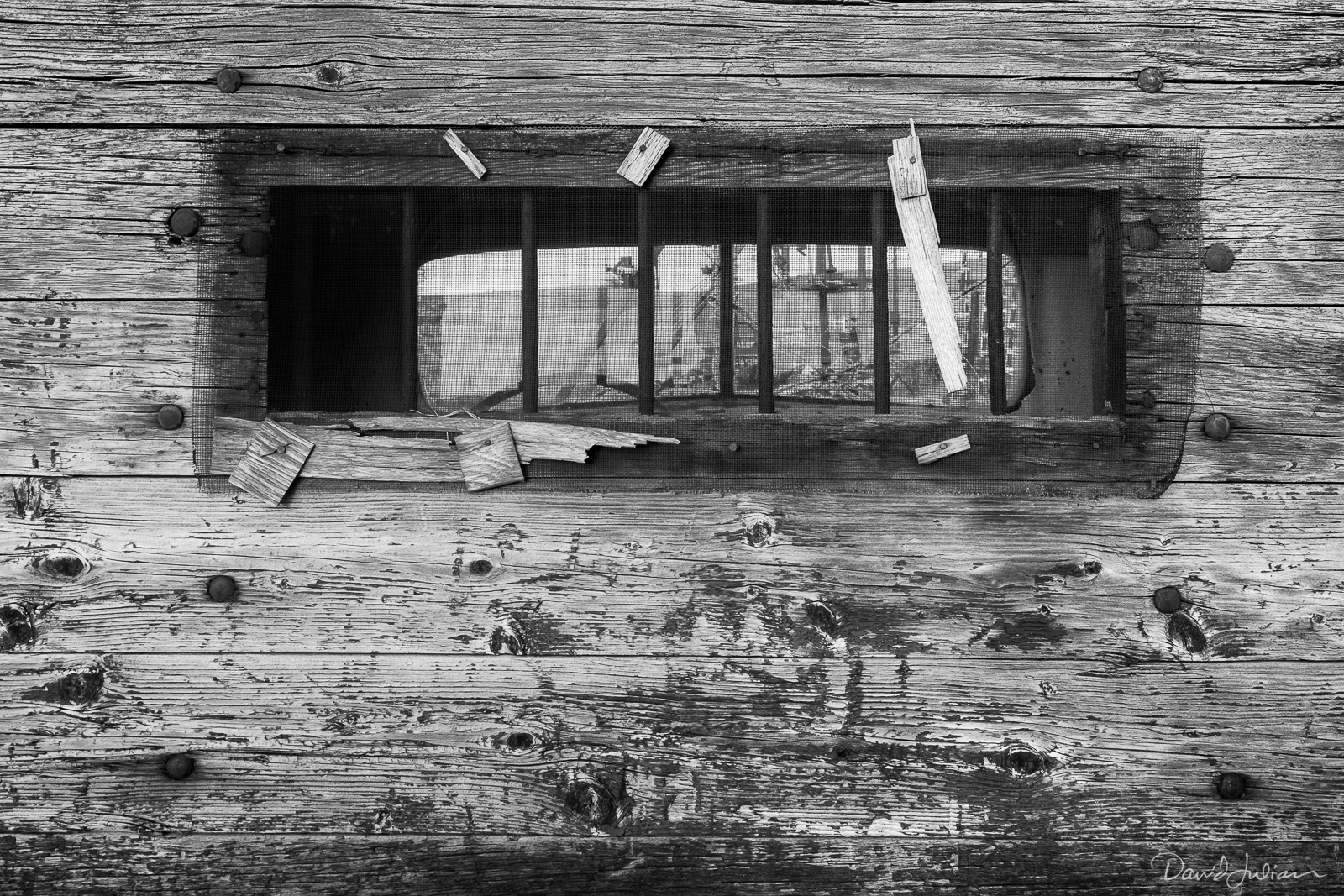
The shot above, made in a WWll Projectile Hoist Room, was shot in near darkness and lit entirely with the LED in my iPhone. Such stark lighting reminds me of early tungsten flashbulb forensic photography that bathed a crime scene or news subject in a garish, hard light. More images from my ongoing ‘Bunkers’ series can be seen on my website.
When I first this wall during a hike, the sun was high above, causing shadows that confused the elegant calligraphic pattern of tar caulking. I returned early the following morning when the wall was in complete shadow, and used a tripod to allow a long exposure at my lowest ISO and f16. This technique allowed me to nuance my framing and capture more definition in the textures and recesses of the walls. The frame edges seen here are an option within the software discussed below.
To process my processed color RAWs into B&W, I leave Lightroom and export into the NIK Silver Efex Pro 2 app. For B&W conversion, Silver Efex Pro 2 is more complex than Lightroom, adding a suite of controls and options that nicely merges modern digital tools with analogs tools from the darkroom. It can be overly complex for the novice, but fortunately there are some excellent presets built in. As good as Silver Efex Pro 2 is, it does not have Lightroom’s excellent linear gradient filter, spotting tool, de-haze adjustment nor any distortion transformation tools found in Lightroom. If the image calls for it, I try to use those tools before exporting from Lightroom.
As you can see above, NIK has built-in traditional film simulations, and it’s extremely easy to use. You can save any ‘recipe’ as a Custom Preset, and you can update any presets variables on the fly. However enticing NIK is, it’s important to know that it is officially a “non-supported” suite of apps, and will not be updated to be compatible with future OS updates on either WIN or MAC. Get it and while you can and enjoy it. Google acquired NIK a few years ago and sold it to DXO, who may someday release a newly-designed tool. For those of you who do not use Lightroom or Photoshop, Silver Efex Pro 2 also runs as a stand-alone app.
For those of you who enjoy rural beauty, industrial details and interesting local characters, join me in Maine where I teach at Maine Media Workshops each summer. I’ll definitely be demonstrating my favorite Lightroom workflows as well as Silver Efex Pro 2 or whatever they end up calling it!
I’ll also be heading back to Cuba to lead ten lucky photographers to my favorite spots, meet my Cuban friends and enjoy the finest street and travel photography I’ve ever experienced. Inquire here for details on my annual trips there and to exotic and interesting places for great photography.
Get in touch here if you’d like to be put on the list for our next Palouse workshop.
Happy shootin’, ~ dave
Just fill in the blanks to subscribe for more travel stories and techniques in Photography, Lightroom and Photoshop.
I occasionally send out "The Viewfinder" e-newsletter, and provide free presets and workshop discounts.
I never over-post, share your info, and you can opt out at any time.

